Preface
Acknowledgments
Contents
Symbols
1 Introduction
1.1 Hybrid Electric Vehicles
1.2 HEV Architectures
1.3 Energy Analysis of Hybrid Electric Vehicles
1.4 Book Structure
References
2 HEV Modeling
2.1 Introduction
2.2 Modeling for Energy Analysis
2.3 Vehicle-Level Energy Analysis
2.3.1 Equations of Motion
2.3.2 Forward and Backward Modeling Approaches
2.3.3 Vehicle Energy Balance
2.3.4 Driving Cycles
2.4 Powertrain Components
2.4.1 Internal Combustion Engine
2.4.2 Torque Converter
2.4.3 Gear Ratios and Mechanical Gearbox
2.4.4 Planetary Gear Sets
2.4.5 Wheels, Brakes, and Tires
2.4.6 Electric Machines
2.4.7 Batteries
2.4.8 Engine Accessories and Auxiliary Loads
References
3 The Energy Management Problem in HEVs
3.1 Introduction
3.2 Energy Management of Hybrid Electric Vehicles
3.3 Classification of Energy Management Strategies
3.4 The Optimal Control Problem in Hybrid Electric Vehicles
3.4.1 Problem Formulation
3.4.2 General Problem Formulation
References
4 Dynamic Programming
4.1 Introduction
4.2 General Formulation
4.3 Application of DP to the Energy Management Problem in HEVs
4.3.1 Implementation Example
References
5 Pontryagin's Minimum Principle
5.1 Introduction
5.2 Minimum Principle for Problems with Constraints on the State
5.2.1 On the System State Boundaries
5.2.2 Notes on the Minimum Principle
5.3 Pontryagin's Minimum Principle for the Energy Management Problem in HEVs
5.3.1 Power-Based PMP Formulation
5.4 Co-State λ and Cost-to-Go Function
References
6 Equivalent Consumption Minimization Strategy
6.1 Introduction
6.2 ECMS-Based Supervisory Control
6.3 Equivalence Between Pontryagin's Minimum Principle and ECMS
6.4 Correction of Fuel Consumption to Account for SOC Variation
6.5 Historical Note: One of the First Examples of ECMS Implementation
References
7 Adaptive Optimal Supervisory Control Methods
7.1 Introduction
7.2 Review of Adaptive Supervisory Control Methods
7.2.1 Adaptation Based on Driving Cycle Prediction
7.2.2 Adaptation Based on Driving Pattern Recognition
7.3 Adaptation Based on Feedback from SOC
7.3.1 Analysis and Comparison of A-PMP Methods
7.3.2 Calibration of Adaptive Strategies
References
8 Case Studies
8.1 Introduction
8.2 Parallel Architecture
8.2.1 Powertrain Model
8.2.2 Optimal Control Problem Solution
8.2.3 Model Implementation
8.2.4 Simulation Results
8.3 Power-Split Architecture
8.3.1 Powertrain Model
8.3.2 Optimal Control Problem Solution
8.3.3 Model Implementation
8.3.4 Simulation Results
References
Series Editors' Biographies
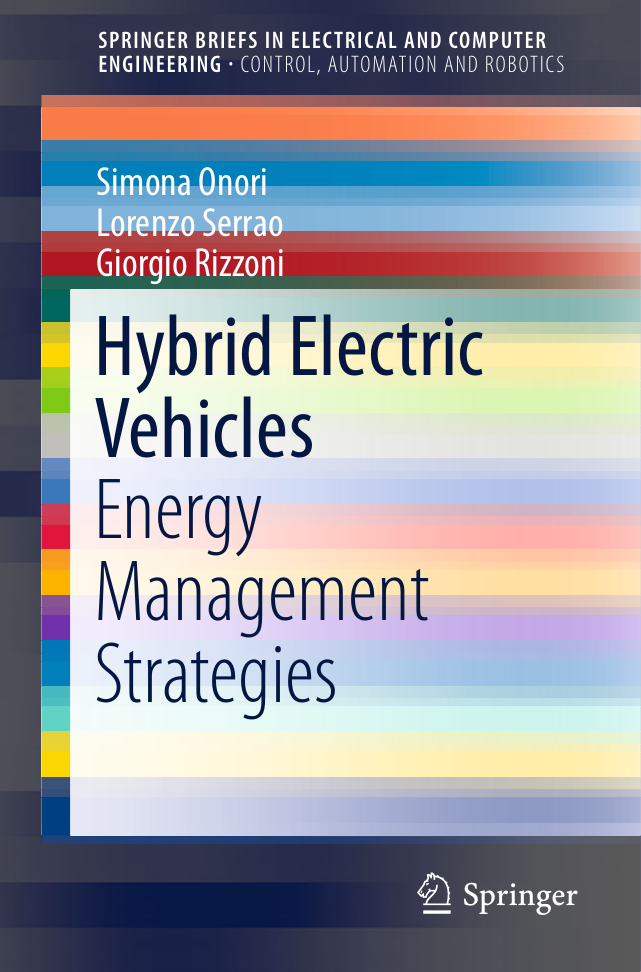
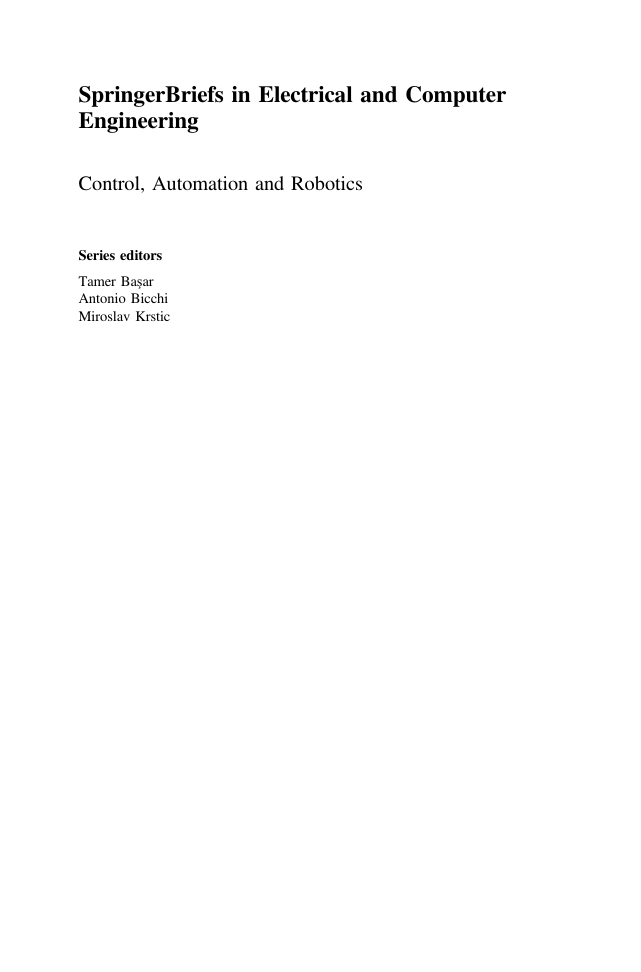

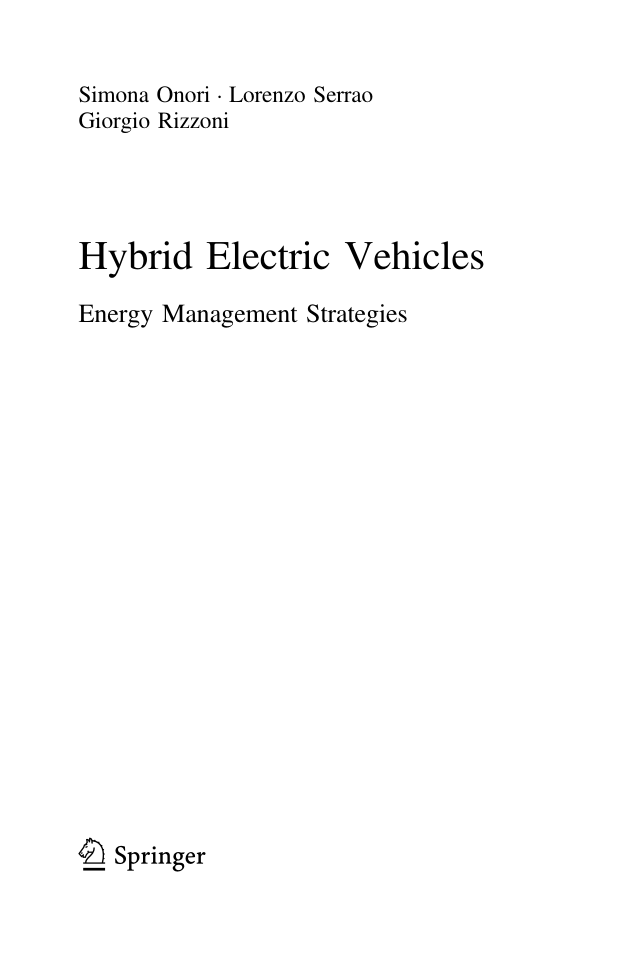
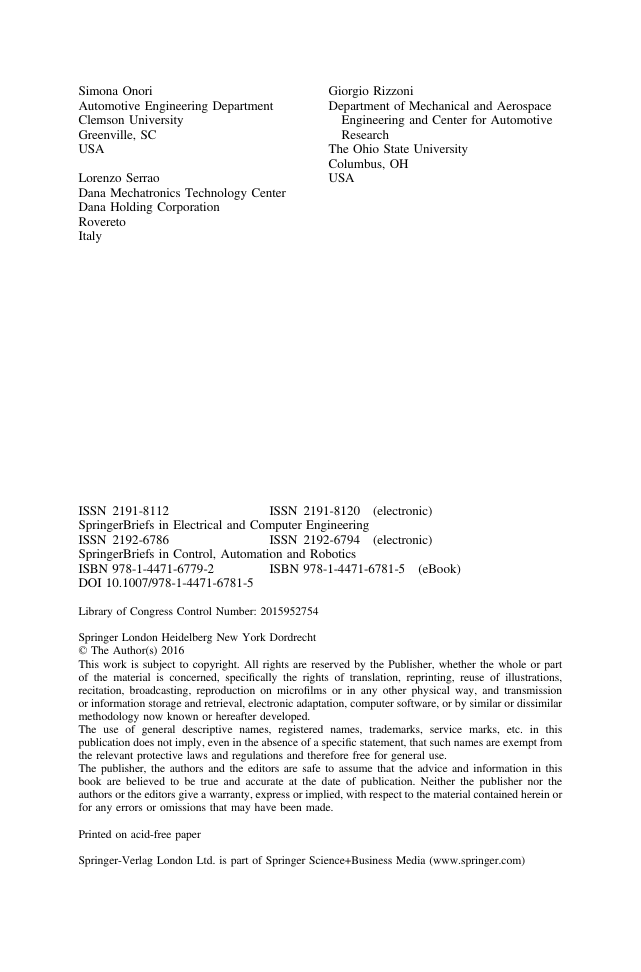

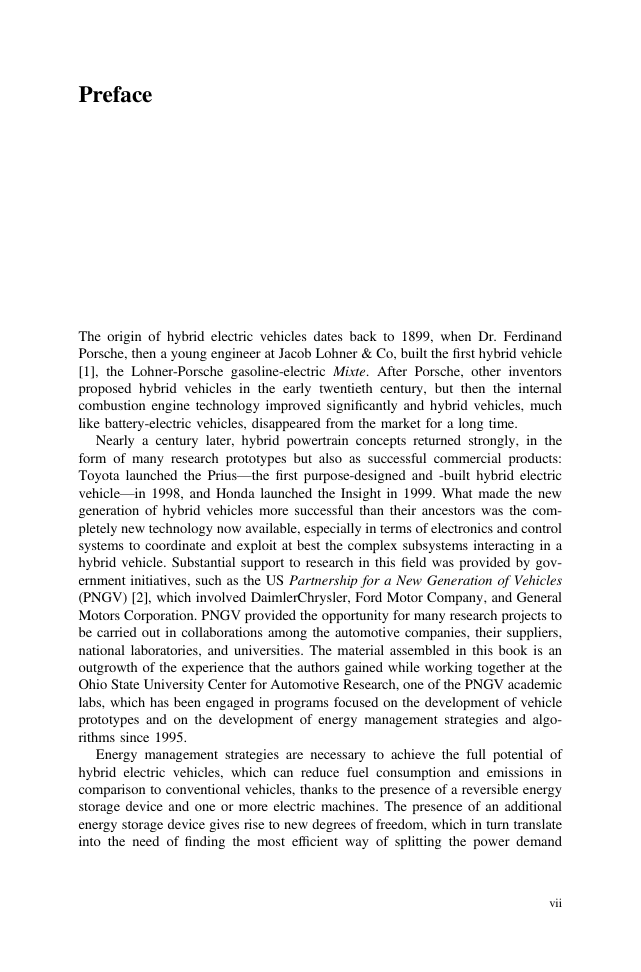
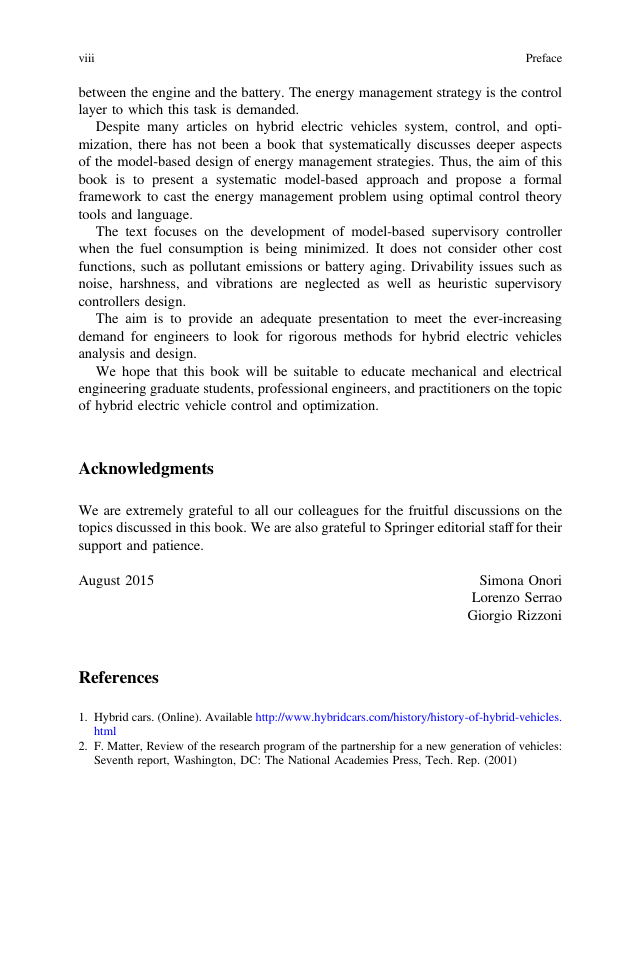








 2023年江西萍乡中考道德与法治真题及答案.doc
2023年江西萍乡中考道德与法治真题及答案.doc 2012年重庆南川中考生物真题及答案.doc
2012年重庆南川中考生物真题及答案.doc 2013年江西师范大学地理学综合及文艺理论基础考研真题.doc
2013年江西师范大学地理学综合及文艺理论基础考研真题.doc 2020年四川甘孜小升初语文真题及答案I卷.doc
2020年四川甘孜小升初语文真题及答案I卷.doc 2020年注册岩土工程师专业基础考试真题及答案.doc
2020年注册岩土工程师专业基础考试真题及答案.doc 2023-2024学年福建省厦门市九年级上学期数学月考试题及答案.doc
2023-2024学年福建省厦门市九年级上学期数学月考试题及答案.doc 2021-2022学年辽宁省沈阳市大东区九年级上学期语文期末试题及答案.doc
2021-2022学年辽宁省沈阳市大东区九年级上学期语文期末试题及答案.doc 2022-2023学年北京东城区初三第一学期物理期末试卷及答案.doc
2022-2023学年北京东城区初三第一学期物理期末试卷及答案.doc 2018上半年江西教师资格初中地理学科知识与教学能力真题及答案.doc
2018上半年江西教师资格初中地理学科知识与教学能力真题及答案.doc 2012年河北国家公务员申论考试真题及答案-省级.doc
2012年河北国家公务员申论考试真题及答案-省级.doc 2020-2021学年江苏省扬州市江都区邵樊片九年级上学期数学第一次质量检测试题及答案.doc
2020-2021学年江苏省扬州市江都区邵樊片九年级上学期数学第一次质量检测试题及答案.doc 2022下半年黑龙江教师资格证中学综合素质真题及答案.doc
2022下半年黑龙江教师资格证中学综合素质真题及答案.doc